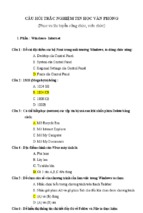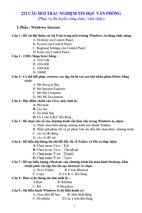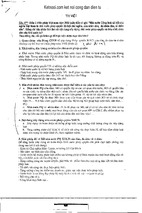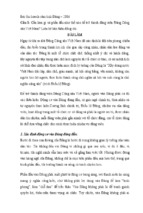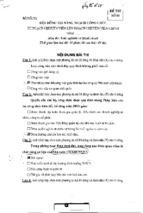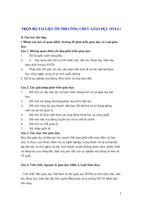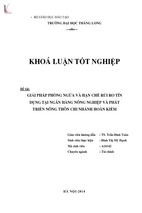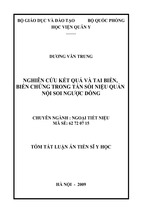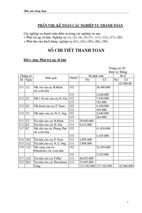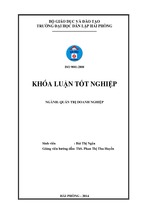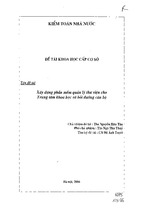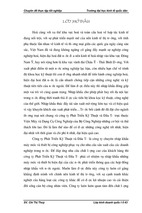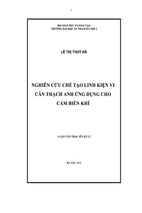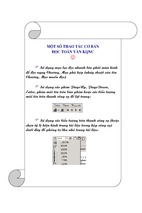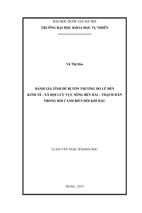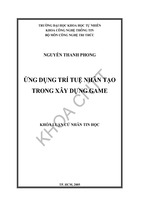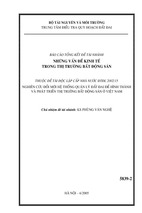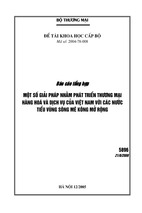This book represents a general introduction to the area of theoretical linguistics
known as cognitive linguistics. It consists of three main parts. Part I provides
an overview of some of the main aims, assumptions and commitments of
the cognitive linguistics enterprise, and provides an indicative sketch of some
of the descriptive analyses and theoretical positions that are representative of
cognitive linguistics. The next two parts focus on the two best-developed
research frameworks in cognitive linguistics: cognitive semantics (Part II), and
cognitive approaches to grammar (Part III). Although some cognitive linguists
(notably Langacker) have extended their theories to account for phonology as
well as meaning and grammar, we will be mainly concerned with meaning and
grammar in this book, and will have little to say about phonology. In part, this
reflects the fact that phonology has received relatively little attention within
cognitive linguistics (although this situation is changing), and in part this
reflects our own interests
COGNITIVE LINGUISTICS
AN INTRODUCTION
Vyvyan Evans and Melanie Green
EDINBURGH UNIVERSITY PRESS
© Vyvyan Evans and Melanie Green, 2006
Edinburgh University Press Ltd
22 George Square, Edinburgh
Typeset in Sabon and Gill Sans
by Servis Filmsetting Ltd, Manchester, and
printed and bound in Great Britain by
Antony Rowe Ltd, Chippenham, Wilts
A CIP record for this book is available from the British Library
ISBN 0 7486 1831 7 (hardback)
ISBN 0 7486 1832 5 (paperback)
The right of Vyvyan Evans and Melanie Green
to be identified as authors of this work
has been asserted in accordance with
the Copyright, Designs and Patents Act 1988.
Contents
Preface
Acknowledgements
Abbreviations, symbols and transcription
Part I Overview of the Cognitive Linguistics Enterprise
Introduction
1 What does it mean to know a language?
1.1 What is language for?
1.1.1 The symbolic function of language
1.1.2 The interactive function of language
1.2 The systematic structure of language
1.2.1 Evidence for a system
1.2.2 The systematic structure of thought
1.3 What do linguists do?
1.3.1 What?
1.3.2 Why?
1.3.3 How?
1.3.4 Speaker intuitions
1.3.5 Converging evidence
1.4 What it means to know a language
1.5 Summary
Further reading
Exercises
xix
xxiii
xxv
3
5
6
6
9
11
12
14
15
15
16
16
16
17
18
20
22
23
v
COGNITIVE LINGUISTICS: AN INTRODUCTION
2 The nature of cognitive linguistics: assumptions and
commitments
2.1 Two key commitments
2.1.1 The ‘Generalisation Commitment’
2.1.2 The ‘Cognitive Commitment’
2.2 The embodied mind
2.2.1 Embodied experience
2.2.2 Embodied cognition
2.2.3 Experiential realism
2.3 Cognitive semantics and cognitive approaches to grammar
2.4 Summary
Further reading
Exercises
3 Universals and variation in language, thought and
experience
3.1 Universals in thought and language
3.1.1 Typological universals
3.1.2 Universals in formal linguistics
3.1.3 Universals in cognitive linguistics
3.2 Cross-linguistic patterns in semantic systems
3.2.1 Patterns in the conceptualisation of space
3.2.2 Patterns in the conceptualisation of time
3.3 Cross-linguistic variation in semantic systems
3.3.1 Variation in the conceptualisation of space
3.3.2 Variation in the conceptualisation of time
3.4 Linguistic relativity and cognitive linguistics
3.4.1 Whorf and the Linguistic Relativity Principle
3.4.2 Language as a shaper of thought
3.4.3 The cognitive linguistics position
3.5 Summary
Further reading
Exercises
4 Language in use: knowledge of language, language change
and language acquisition
4.1 Language in use
4.1.1 A usage event
4.1.2 The relationship between usage and linguistic
structure
4.1.3 Comprehension and production
4.1.4 Context
vi
27
27
28
40
44
45
46
47
48
50
50
52
54
55
57
60
63
68
68
75
87
87
92
95
96
98
101
101
102
105
108
109
109
111
112
112
CONTENTS
4.1.5 Frequency
Cognitive Grammar
4.2.1 Abstraction, schematisation and language use
4.2.2 Schemas and their instantiations
4.2.3 Partial sanction
4.2.4 The non-reductive nature of schemas
4.2.5 Frequency in schema formation
4.3 A usage-based approach to language change
4.3.1 Historical linguistics and language change
4.3.2 The Utterance Selection Theory of language
change
4.3.3 The Generalised Theory of Selection and the
Theory of Utterance Selection
4.3.4 Causal mechanisms for language change
4.4 The usage-based approach to language acquisition
4.4.1 Empirical findings in language acquisition
4.4.2 The cognitive view: socio-cognitive mechanisms
in language acquisition
4.4.3 Comparing the generative view of language
acquisition
4.5 Summary
Further reading
Exercises
4.2
Part II Cognitive Semantics
Introduction
5 What is cognitive semantics?
5.1 Guiding principles
5.1.1 Conceptual structure is embodied
5.1.2 Semantic structure is conceptual structure
5.1.3 Meaning representation is encyclopaedic
5.1.4 Meaning construction is conceptualisation
5.2 Phenomena investigated within cognitive semantics
5.2.1 The bodily basis of meaning
5.2.2 Conceptual structure
5.2.3 Encyclopaedic semantics
5.2.4 Mappings
5.2.5 Categorisation
5.2.6 Word meaning and polysemy
5.3 Methodology
5.4 Some comparisons with formal approaches to semantics
114
114
115
115
116
117
118
120
121
123
125
127
133
134
136
140
146
147
148
153
156
157
157
158
160
162
163
163
165
166
167
168
169
170
171
vii
COGNITIVE LINGUISTICS: AN INTRODUCTION
5.5 Summary
Further reading
Exercises
172
173
174
6 Embodiment and conceptual structure
6.1 Image schemas
6.1.1 What is an image schema?
6.1.2 Properties of image schemas
6.1.3 Image schemas and linguistic meaning
6.1.4 A provisional list of image schemas
6.1.5 Image schemas and abstract thought
6.2 Conceptual structure
6.2.1 Semantic structure
6.2.2 Schematic systems
6.3 Summary
Further reading
Exercises
176
177
178
179
189
190
190
191
192
194
201
201
202
7 The encyclopaedic view of meaning
7.1 Dictionaries versus encylopaedias
7.1.1 The dictionary view
7.1.2 Problems with the dictionary view
7.1.3 Word meaning versus sentence meaning
7.1.4 The encyclopaedic view
7.2 Frame semantics
7.2.1 What is a semantic frame?
7.2.2 Frames in cognitive psychology
7.2.3 The frame
7.2.4 Speech event frames
7.2.5 Consequences of adopting a frame-based model
7.3 The theory of domains
7.3.1 What is a domain?
7.3.2 Basic, image-schematic and abstract domains
7.3.3 Other characteristics of domains
7.3.4 Profile/base organisation
7.3.5 Active zones
7.4 The perceptual basis of knowledge representation
7.5 Summary
Further reading
Exercises
206
207
207
210
213
215
222
222
222
225
228
229
230
230
232
235
236
238
240
243
244
245
viii
CONTENTS
8 Categorisation and idealised cognitive models
8.1 Categorisation and cognitive semantics
8.1.1 The classical theory
8.1.2 The definitional problem
8.1.3 The problem of conceptual fuzziness
8.1.4 The problem of prototypicality
8.1.5 Further problems
8.2 Prototype theory
8.2.1 Principles of categorisation
8.2.2 The categorisation system
8.2.3 The vertical dimension
8.2.4 The horizontal dimension
8.2.5 Problems with prototype theory
8.3 The theory of idealised cognitive models
8.3.1 Sources of typicality effects
8.3.2 Radial categories as a further source of typicality
effects
8.3.3 Addressing the problems with prototype theory
8.4 The structure of ICMs
8.5 Summary
Further reading
Exercises
248
249
251
252
253
254
254
255
255
256
256
264
268
269
270
9 Metaphor and metonymy
9.1 Literal versus figurative language
9.1.1 Literal and figurative language as complex concepts
9.1.2 Can the distinction be maintained?
9.2 What is metaphor?
9.3 Conceptual Metaphor Theory
9.3.1 The unidirectionality of metaphor
9.3.2 Motivation for target and source
9.3.3 Metaphorical entailments
9.3.4 Metaphor systems
9.3.5 Metaphors and image schemas
9.3.6 Invariance
9.3.7 The conceptual nature of metaphor
9.3.8 Hiding and highlighting
9.4 Primary Metaphor Theory
9.4.1 Primary and compound metaphors
9.4.2 Experiential correlation
9.4.3 Motivating primary metaphors
9.4.4 Distinguishing primary and compound metaphors
286
287
287
289
293
296
296
297
298
299
300
301
303
303
304
304
305
306
307
275
278
279
281
282
283
ix
COGNITIVE LINGUISTICS: AN INTRODUCTION
9.5
9.6
What is metonymy?
Conceptual metonymy
9.6.1 Metonymy as an access mechanism
9.6.2 Metonymy-producing relationships
9.6.3 Vehicles for metonymy
9.7 Metaphor-metonymy interaction
9.8 Summary
Further reading
Exercises
310
314
315
316
317
318
321
322
325
10 Word meaning and radial categories
10.1 Polysemy as a conceptual phenomenon
10.2 Words as radial categories
10.3 The full-specification approach
10.3.1 Image schema transformations
10.3.2 Metaphorical extensions
10.4 Problems with the full-specification approach
10.5 The Principled Polysemy approach
10.5.1 Distinguishing between senses
10.5.2 Establishing the prototypical sense
10.5.3 Illustration of a radial category based on Principled
Polysemy
10.5.4 Beyond prepositions
10.6 The importance of context for polysemy
10.6.1 Usage context: subsenses
10.6.2 Sentential context: facets
10.6.3 Knowledge context: ways of seeing
10.7 Summary
Further reading
Exercises
328
329
331
333
337
339
339
342
342
344
11 Meaning construction and mental spaces
11.1 Sentence meaning in formal semantics
11.2 Meaning construction in cognitive semantics
11.3 Towards a cognitive theory of meaning construction
11.4 The architecture of mental space construction
11.4.1 Space builders
11.4.2 Elements
11.4.3 Properties and relations
11.4.4 Mental space lattices
11.4.5 Counterparts and connectors
11.4.6 The Access Principle
363
364
365
368
371
371
371
372
374
375
376
x
347
348
352
353
354
355
355
356
359
CONTENTS
11.4.7 Roles and values
11.5 An illustration of mental space construction
11.6 The dynamic nature of meaning construction
11.6.1 Tense and aspect in English
11.6.2 The tense-aspect system in Mental Spaces Theory
11.6.3 Epistemic distance
11.7 Summary
Further reading
Exercises
381
382
386
387
389
394
396
397
397
12 Conceptual blending
12.1 The origins of Blending Theory
12.2 Towards a theory of conceptual integration
12.3 The nature of blending
12.3.1 The elements of conceptual blending
12.3.2 Further linguistic examples
12.3.3 Non-linguistic examples
12.4 Vital relations and compressions
12.4.1 Vital relations
12.4.2 A taxonomy of vital relations and their
compressions
12.4.3 Disintegration and decompression
12.5 A taxonomy of integration networks
12.5.1 Simplex networks
12.5.2 Mirror networks
12.5.3 Single-scope networks
12.5.4 Double-scope networks
12.6 Multiple blending
12.7 Constraining Blending Theory
12.8 Comparing Blending Theory with Conceptual Metaphor
Theory
12.8.1 Contrasts
12.8.2 When is a metaphor not a blend?
12.8.3 What Blending Theory adds to Conceptual
Metaphor Theory
12.9 Summary
Further reading
Exercises
400
401
403
407
408
410
415
418
419
13 Cognitive semantics in context
13.1 Truth-conditional semantics
13.1.1 Meaning, truth and reality
445
446
446
420
425
426
426
426
427
429
431
433
435
435
437
437
439
440
441
xi
COGNITIVE LINGUISTICS: AN INTRODUCTION
13.1.2
13.1.3
13.1.4
13.1.5
Object language versus metalanguage
The inconsistency of natural language
Sentences and propositions
Truth-conditional semantics and the generative
enterprise
13.1.6 Compositionality of meaning
13.1.7 Translating natural language into a
metalanguage
13.1.8 Semantic interpretation and matching
13.1.9 Comparison with cognitive semantics
13.2 Relevance Theory
13.2.1 Ostensive communication
13.2.2 Mutual cognitive environment
13.2.3 Relevance
13.2.4 Explicature and implicature
13.2.5 Metaphor
13.2.6 Comparison with cognitive semantics
13.3 Summary
Further reading
Exercises
446
447
448
449
450
451
452
455
459
459
459
460
461
463
463
465
466
466
Part III Cognitive Approaches to Grammar
Introduction
471
14 What is a cognitive approach to grammar?
14.1 Guiding assumptions
14.1.1 The symbolic thesis
14.1.2 The usage-based thesis
14.1.3 The architecture of the model
14.2 Distinct cognitive approaches to grammar
14.2.1 The ‘Conceptual Structuring System Model’
14.2.2 Cognitive Grammar
14.2.3 Constructional approaches to grammar
14.2.4 Cognitive approaches to grammaticalisation
14.3 Grammatical terminology
14.3.1 Grammar
14.3.2 Units of grammar
14.3.3 Word classes
14.3.4 Syntax
14.3.5 Grammatical functions
14.3.6 Agreement and case
14.4 Characteristics of the cognitive approach to grammar
475
476
476
478
479
480
480
480
481
482
483
484
484
486
492
494
498
500
xii
CONTENTS
14.4.1 Grammatical knowledge: a structured inventory of
symbolic units
14.4.2 Features of the closed-class subsystem
14.4.3 Schemas and instances
14.4.4 Sanctioning and grammaticality
14.5 Summary
Further reading
Exercises
501
502
504
505
506
507
509
15 The conceptual basis of grammar
15.1 The grammatical subsystem: encoding semantic structure
15.2 Talmy’s ‘Conceptual Structuring System Model’
15.2.1 The configuration of and
15.2.2 Conceptual alternativity
15.2.3 Schematic systems
15.2.4 The ‘Configurational Structure System’
15.2.5 The ‘Attentional System’
15.2.6 The ‘Perspectival System’
15.2.7 The ‘Force-Dynamics System’
15.3 Langacker’s theory of Cognitive Grammar
15.3.1 The conceptual basis of word classes
15.3.2 Attention
15.3.3 Force-dynamics
15.4 Categorisation and polysemy in grammar: the network
conception
15.5 Summary
Further reading
Exercises
512
513
514
515
516
517
518
526
528
531
533
533
535
544
16 Cognitive Grammar: word classes
16.1 Word classes: linguistic categorisation
16.2 Nominal predications: nouns
16.2.1 Bounding
16.2.2 Homogeneity versus heterogeneity
16.2.3 Expansibility and contractibility versus replicability
16.2.4 Abstractions
16.3 Nominal versus relational predications
16.4 Temporal versus atemporal relations
16.4.1 Temporal relations: verbs
16.4.2 Atemporal relations
16.4.3 Class schemas
16.5 Nominal grounding predications
553
554
556
557
559
559
560
561
563
564
565
570
572
545
548
549
550
xiii
COGNITIVE LINGUISTICS: AN INTRODUCTION
16.5.1 Determiners and quantifiers
16.5.2 Grounding
16.6 Summary
Further reading
Exercises
572
575
577
577
578
17 Cognitive Grammar: constructions
17.1 Phrase structure
17.1.1 Valence
17.1.2 Correspondence
17.1.3 Profile determinacy
17.1.4 Conceptual autonomy versus conceptual
dependence
17.1.5 Constituency
17.1.6 The prototypical grammatical construction
17.2 Word structure
17.2.1 Phonological autonomy and dependence
17.2.2 Semantic autonomy and dependence
17.2.3 Prototypical stems and affixes
17.2.4 Composite structure
17.2.5 Constructional schemas
17.2.6 Grammatical morphemes and agreement
17.3 Clauses
17.3.1 Valence at the clause level
17.3.2 Grammatical functions and transitivity
17.3.3 Case
17.3.4 Marked coding: the passive construction
17.4 Summary
Further reading
Exercises
585
588
588
589
590
590
591
591
592
593
594
595
601
606
609
610
611
612
18 Cognitive Grammar: tense, aspect, mood and voice
18.1 English verbs: form and function
18.2 The clausal head
18.2.1 The passive construction: [be2 [3 [V]]]
18.2.2 The progressive construction: [be1 [-ing [V]]]
18.2.3 The perfect construction: [have [4 [V]]]
18.3 The grounding predication: mood and tense
18.3.1 Mood
18.3.2 Tense
18.3.3 The epistemic model
18.4 Situation aspect
615
616
617
620
621
621
624
625
626
627
631
xiv
581
582
583
584
585
CONTENTS
18.4.1 Situation types
18.4.2 Perfective and imperfective
18.4.3 Aspect and the count/mass distinction
18.5 Summary
Further reading
Exercises
631
632
634
637
638
638
19 Motivating a construction grammar
19.1 Constructions versus ‘words and rules’
19.2 Exploring idiomatic expressions
19.2.1 Typology of idiomatic expressions
19.2.2 Case study I: the let alone construction
19.2.3 Case study II: the what’s X doing Y construction
19.3 Construction Grammar
19.3.1 The Construction Grammar model
19.3.2 Construction Grammar: a ‘broadly generative’
model
19.3.3 Comparing Construction Grammar with
Cognitive Grammar
19.4 The ‘Generalisation Commitment’
19.5 Summary
Further reading
Exercises
641
642
643
643
648
651
653
653
20 The architecture of construction grammars
20.1 Goldberg’s construction grammar
20.1.1 Assumptions
20.1.2 Advantages of a constructional approach to verb
argument structure
20.1.3 The relationship between verbs and
constructions
20.1.4 Relationships between constructions
20.1.5 Case studies
20.2 Radical Construction Grammar
20.2.1 Taxonomy of constructions
20.2.2 Emphasis on diversity
20.2.3 Five key features of RCG
20.3 Embodied Construction Grammar
20.3.1 Emphasis on language processing
20.3.2 Analysis and simulation
20.4 Comparing constructional approaches to grammar
20.5 Summary
666
667
667
659
660
661
662
662
663
669
671
680
684
692
693
693
693
697
697
698
699
701
xv
COGNITIVE LINGUISTICS: AN INTRODUCTION
Further reading
Exercises
702
703
21 Grammaticalisation
21.1 The nature of grammaticalisation
21.1.1 Form change
21.1.2 Meaning change
21.2 Metaphorical extension approaches
21.2.1 Case study: --
21.2.2 Case study: --
21.3 Invited Inferencing Theory
21.3.1 Case study: the evolution of must
21.4 The subjectification approach
21.4.1 Case study: be going to
21.4.2 Case study: the evolution of auxiliaries from verbs
of motion or posture
21.5 Comparison of the three approaches: be going to
21.6 Summary
Further reading
Exercises
707
708
710
712
714
718
719
721
725
728
730
22 Cognitive approaches to grammar in context
22.1 Theories of grammar: assumptions, objectives,
methodology
22.1.1 Cognitive approaches to grammar
22.1.2 Generative approaches to grammar
22.1.3 Cognitive versus generative models
22.1.4 Functional-typological approaches to grammar
22.2 Core issues in grammar: comparing cognitive and
generative accounts
22.2.1 Word classes
22.2.2 Constituency: heads and dependents
22.2.3 The status of tree diagrams
22.2.4 Grammatical functions and case
22.2.5 The verb string: tense, aspect and mood
22.2.6 The passive construction
22.3 Summary
Further reading
Exercises
741
xvi
730
732
733
734
736
741
743
743
752
758
761
761
763
763
765
767
769
771
771
773
CONTENTS
Part IV Conclusion
23 Assessing the cognitive linguistics enterprise
23.1 Achievements
23.2 Remaining challenges
23.3 Summary
777
777
779
782
Appendix: Tables and Figures
References
Index
783
792
812
xvii
Preface
The nature of this book
This book represents a general introduction to the area of theoretical linguistics known as cognitive linguistics. It consists of three main parts. Part I provides an overview of some of the main aims, assumptions and commitments of
the cognitive linguistics enterprise, and provides an indicative sketch of some
of the descriptive analyses and theoretical positions that are representative of
cognitive linguistics. The next two parts focus on the two best-developed
research frameworks in cognitive linguistics: cognitive semantics (Part II), and
cognitive approaches to grammar (Part III). Although some cognitive linguists
(notably Langacker) have extended their theories to account for phonology as
well as meaning and grammar, we will be mainly concerned with meaning and
grammar in this book, and will have little to say about phonology. In part, this
reflects the fact that phonology has received relatively little attention within
cognitive linguistics (although this situation is changing), and in part this
reflects our own interests.
Who is this book for?
Our aim has been to provide a reasonably comprehensive general introduction
to cognitive linguistics that is accessible enough for undergraduate students at
the university level, while also serving as a work of reference both for linguists
and for scholars from neighbouring disciplines. While striving for accessibility,
we have also retained considerable detail (including relevant citations in the
running text), so that readers (including research students and professional linguists unfamiliar with cognitive linguistics, as well as interested readers from
xix
COGNITIVE LINGUISTICS: AN INTRODUCTION
neighbouring disciplines), are provided with a route into the primary literature.
In selecting the material presented, and in the presentation itself, we have
attempted to provide as balanced a perspective as possible. However, cognitive
linguistics represents a collection of approaches rather than a unified theoretical framework, and different authors often take quite distinct positions on
similar phenomena, sometimes relying on distinct terminology. It follows that
what we present here under the name of ‘cognitive linguistics’ should be
understood as a presentation of the cognitive approach ‘as we see it’.
Using the book
We have designed the book so that, in general terms, each chapter builds on
preceding chapters. In particular, our decision to present the material on cognitive semantics (Part II) before the material on cognitive approaches to
grammar (Part III) reflects the fact that cognitive grammarians assume much
of what has been established by cognitive semanticists in developing their
approaches. However, because different readers and course tutors will need to
use the book in ways tailored to their specific objectives, we have attempted to
make Part II and Part III of the book relatively independent so that they can be
used for separate courses. The book has sufficient coverage to provide the basis
for a number of different courses. We outline below suggestions for ‘routes’
through the book for three different types of course, assuming 12 teaching
weeks at the rate of one chapter per week. Of course, these suggestions can be
adjusted depending on teaching time available, level of course and so on. The
suggestions made here reflect undergraduate courses taught at the University
of Sussex, where this textbook was piloted prior to publication.
Vyvyan Evans and Melanie Green
Linguistics and English Language Department
University of Sussex
March 2005
xx
Part I: Overview of the cognitive
linguistics enterprise
Introduction
Cognitive linguistics is a modern school of linguistic thought that originally
emerged in the early 1970s out of dissatisfaction with formal approaches to language. Cognitive linguistics is also firmly rooted in the emergence of modern
cognitive science in the 1960s and 1970s, particularly in work relating to human
categorisation, and in earlier traditions such as Gestalt psychology. Early
research was dominated in the 1970s and 1980s by a relatively small number of
scholars. By the early 1990s, there was a growing proliferation of research in
this area, and of researchers who identified themselves as ‘cognitive linguists’.
In 1989/90, the International Cognitive Linguistics Society was established,
together with the journal Cognitive Linguistics. In the words of the eminent
cognitive linguist Ronald Langacker ([1991] 2002: xv), this ‘marked the birth
of cognitive linguistics as a broadly grounded, self conscious intellectual
movement’.
Cognitive linguistics is described as a ‘movement’ or an ‘enterprise’ because
it is not a specific theory. Instead, it is an approach that has adopted a common
set of guiding principles, assumptions and perspectives which have led to a
diverse range of complementary, overlapping (and sometimes competing) theories. For this reason, Part I of this book is concerned with providing a ‘character sketch’ of the most fundamental assumptions and commitments that
characterise the enterprise as we see it.
In order to accomplish this, we map out the cognitive linguistics enterprise
from a number of perspectives, beginning with the most general perspective
and gradually focusing in on more specific issues and areas. The aim of Part I
is to provide a number of distinct but complementary angles from which
the nature and character of cognitive linguistics can be understood. We also
draw comparisons with Generative Grammar along the way, in order to set the
3
COGNITIVE LINGUISTICS: AN INTRODUCTION
cognitive approach within a broader context and to identify how it departs from
this other well known model of language.
In Chapter 1, we begin by looking at language in general and at linguistics,
the scientific study of language. By answering the question ‘What does it mean
to know a language?’ from the perspective of cognitive linguistics, we provide
an introductory insight into the enterprise. The second chapter is more specific and explicitly examines the two commitments that guide research in
cognitive linguistics: the ‘Generalisation Commitment’ and the ‘Cognitive
Commitment’. We also consider the notion of embodied cognition, and the
philosophical doctrine of experiential realism, both of which are central to the
enterprise. We also introduce the two main approaches to the study of language
and the mind adopted by cognitive linguists: cognitive semantics and cognitive
(approaches to) grammar, which serve as the focus for Part II and Part III of
the book, respectively.
Chapter 3 addresses the issue of linguistic universals and cross-linguistic
variation. By examining how cognitive linguists approach such issues, we begin
to get a feel for how cognitive linguistics works in practice. We explore the idea
of linguistic universals from typological, formal and cognitive perspectives,
and look in detail at patterns of similarity and variation in human language,
illustrating with an investigation of how language and language-users encode
and conceptualise the domains of SPACE and TIME. Finally, we address the
Sapir-Whorf hypothesis: the idea that language can influence non-linguistic
thought, and examine the status of this idea from the perspective of cognitive
linguistics.
In Chapter 4 we focus on the usage-based approach adopted by cognitive linguistic theories. In particular, we examine how representative usage-based theories attempt to explain knowledge of language, language change and child
language acquisition. Finally, we explore how the emphasis on situated language use and context gives rise to new theories of human language that, for
the first time, provide a significant challenge to formal theories of language.
4
- Xem thêm -

